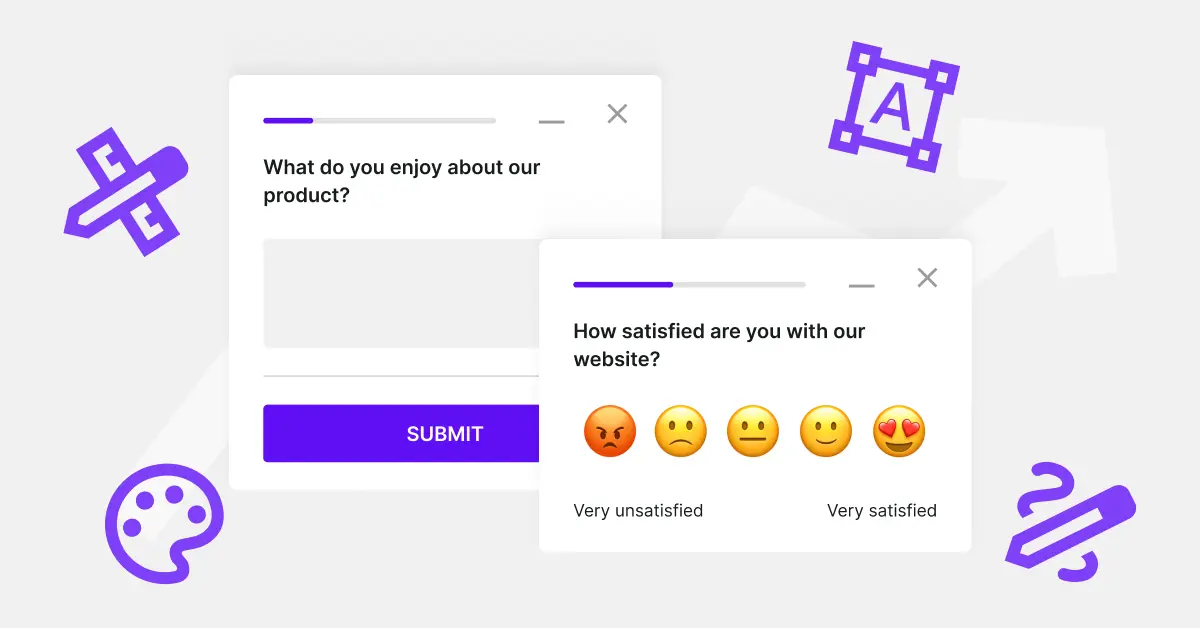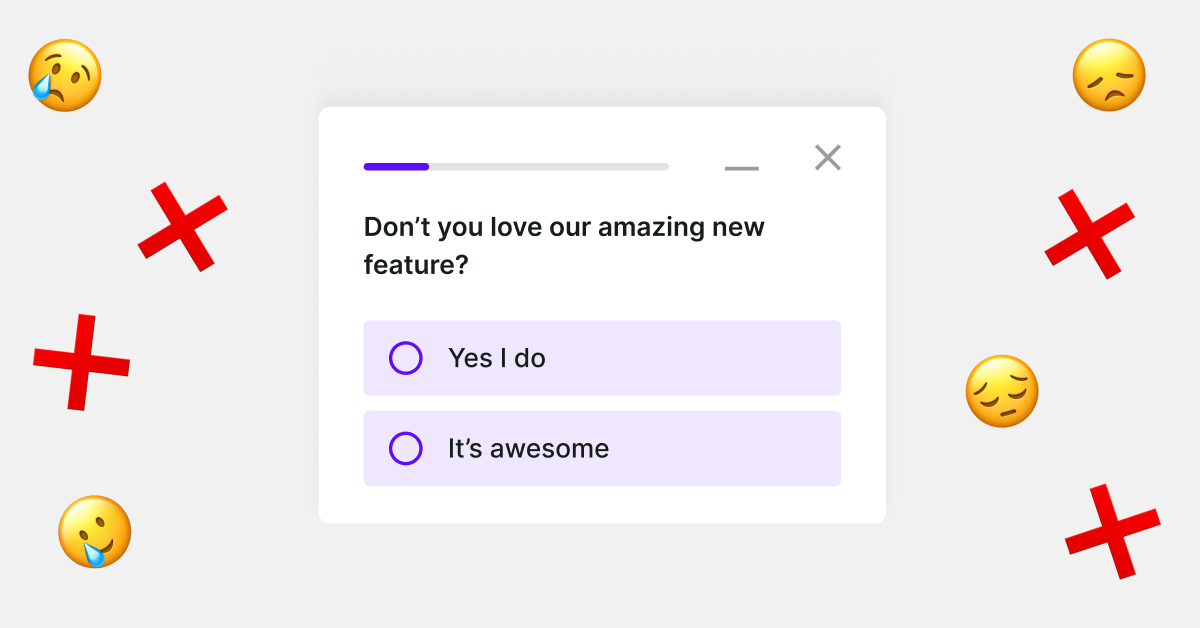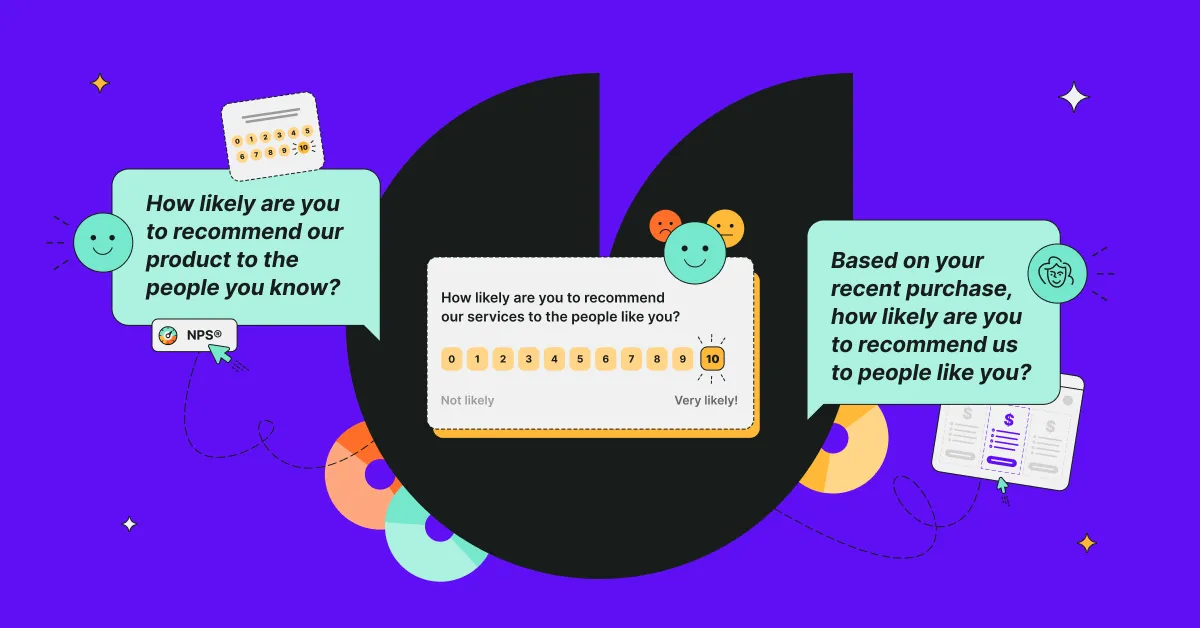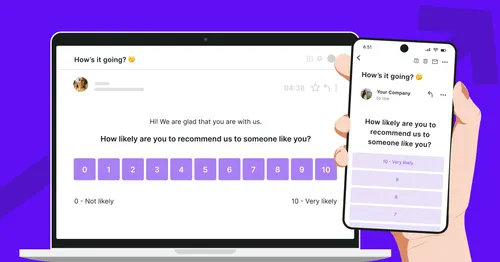If you've been blogging for a while, sooner or later, you might reach a point where you become unsure about your content's relevance. Perhaps, you're becoming concerned about your readers' interaction with your site, or about not getting ample traffic. With Survicate's Reader Interest Survey, you will get a bunch of new ideas, and once again you will drive readers' attention to your blog.
Why is a Reader Interest Survey Necessary?
To understand the genuine concern of your audience, you cannot solely rely on blog comments or Google Analytics. Statistics and random feedback won't give you a clear picture of your readers' interests.
While some of your audience may leave actionable feedback in the blog comments, most of them won't unless asked to do so.
That is why a readers' interest survey is so useful when it comes to collecting honest, actionable feedback and using your findings to improve the quality of your content:
💡 YOU MAY ALSO BE INTERESTED IN: Audience interest survey template
So what does it allow you to do, exactly?
By running a survey, you can improve the quality of the content on your website. You can identify topics your readers need to educate themselves on the most. You can also encourage them to subscribe to your newsletter with gated freebie content.
A study revealed that 87 percent of users want to have a say on future products or services. If you let them influence your content choices, you'll gain meaningful insight into your readers' expectations.
This article explains how to create an effective blog reading survey and attract your audience's attention. Read on!
And if you're ready to launch your first reader interest survey now, create a free Survicate account now.
.avif)
How to Conduct a Readers' Interest Survey?
It's pretty straightforward – you have to design your survey well since the survey response rate depends wholly on it. You can use a content research tool that comes with pre-loaded surveys, or simply create your own poll from scratch.
The tips below will help you establish a long-term, cohesive feedback collection strategy. For the sake of maximizing your feedback collection efforts, we'll take a look at various survey types and distribution channels.
- Create a new survey using a tool of your preference. You can use a Free Survicate account to conduct a blog reading survey quickly and easily or find out how we collected 600 responses from our blog readers – in just 3 days with a readers' interest survey you've seen above.
- Collect feedback on an ongoing basis. You should keep your website survey active on your blog and article pages permanently. This method will help you constantly monitor reader satisfaction and content relevance. With that in mind, you should also consider using a survey tool that makes sure you don't ask for feedback from users who've already provided their opinion on a given article.
- Make sure your surveys are optimized for mobile screens because a big chunk of global survey traffic comes from mobile devices.
- Consider sharing a link to your survey on social media channels and distributing the survey via email. Using all customer communication channels will help you gain a high response rate.
- If you do decide to run reader interest surveys only in chosen periods of time, try using the exact same online questionnaire – this way you'll amass answers over an extended period, and will be able to cross-analyze results over time.
- Don't worry about planning specific posts for your reader surveys. Instead, I recommend running website surveys on article pages that rank well in search results and have a significant CTR.
- If you want to avoid website popups altogether, you can also consider adding a survey link in your post content. Bear in mind though that it will not be visible for readers who only scan your posts, and will provide much lower response rates.
- Alternatively, add a content rating survey below a blog post, and asses interest with follow-up questions:
Things to Remember Creating Reader Interest Survey Questions
Since readers are taking time out of their day to share their opinions about your brand, you have to be careful while crafting your survey questions. Don't ever make them feel that your queries are trivial or consume much of their time.
Here are some best practices one has to keep in mind before running surveys:
- Keep your questions in a multiple-choice format. Your readers might want to list more than one blog content topic that is of interest to them.
- Use open-ended questions carefully. They require much more time to fill in by respondents, not to mention the effort to analyze results on your side.
- Make your surveys maximum 10 questions long. Most of the readers do not wish to spend more than 3 minutes on a page.
- Ask only about what you need to know and what you don't know yet. Chances are you'll find such data via Google Analytics.
- In reader surveys, don't ask respondents to provide personal details. If, for some reason, you need their names and contact details, make sure it's non-obligatory. Your blog readers might want to remain unknown.
- Cross-analyze your survey responses with data such as behavioral patterns of your readers (for ex. session recordings). This will help you learn about the specificity of your regular site visitors as opposed to new readers.
- Ask your readers about the topics or areas they're most interested in. Use your insights to create new articles. Not only will you deliver anticipated content. You will also gain readers' trust by making them feel heard and taken into account.
Reader Interest Survey Questions
Here are a few reader interest survey question examples to inspire your survey creation process:
- Rate the content relevance on a scale. Here's where CSAT surveys or smiley scale surveys will be a perfect solution).
- What types of posts do you like the most on our website?
- What topics would you like us to focus on more on the blog?
- Is there any type of content on our blog that you don't find relevant?
- How often would you like to receive our newsletters?
READ ALSO:
20 Key Website Survey Questions You Should Ask in 2021
5 Most Crucial Website Satisfaction Survey Questions in 2021
Process the Customer Feedback and Act on It
Depending on the feedback collection tool and the method you use, your respondents will be anonymous. Anonymity promotes both openness and, well...occasional coarseness.
Regardless of the feedback you get, negative or positive, receiving feedback allows you to increase your brand's reputation, improve customer experience, and build customer loyalty. It's true also in the case of the input from the disappointed audience.
Research shows that 78% of customers feel cared about whenever brands respond to their feedback. It shows how important responding to and acting on feedback is. Whether or not the feedback is positive is secondary.
.avif)
Summing up
Website surveys help you build relevant content strategies, improve website experience, and ultimately increase conversion rates.
Out of numerous great customer feedback tools you can use on your website, we obviously recommend Survicate - for its versatility and ease of use - proved by feedback from Survicate's users. ;)
Pondering over collecting feedback on your website? Think no more. Just give the feedback collection tool a go. Make use of numerous survey templates Survicate offers, play around with our free trial, or choose a higher subscription to suit your needs.

.avif)











.svg)

.svg)



